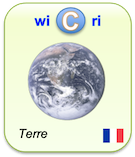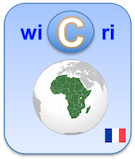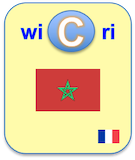Ceramic production during the Middle Horizon: Wari and Tiwanaku clay procurement in the Moquegua Valley, Peru
Identifieur interne : 001426 ( Istex/Corpus ); précédent : 001425; suivant : 001427Ceramic production during the Middle Horizon: Wari and Tiwanaku clay procurement in the Moquegua Valley, Peru
Auteurs : Nicola Sharratt ; Mark Golitko ; P. Ryan Williams ; Laure DussubieuxSource :
- Geoarchaeology [ 0883-6353 ] ; 2009-11.
Abstract
As the only place simultaneously occupied by the Middle Horizon (A.D. 600–1000) Andean states, the Tiwanaku and the Wari, the Moquegua Valley in southern Peru is of critical importance to understanding relations between the two states. Visual studies of Tiwanaku and Wari ceramics in the valley have elucidated differences in form and decoration. The procurement of raw clays was central to the production of these ceramics, and understanding where people procured their clay may provide insight into the social and economic interactions between these two states. Survey of the Moquegua Valley indicates the extensive availability of raw clays. Results of laser ablation inductively coupled plasma mass spectrometry (LA‐ICP‐MS) analyses of clays indicate that there is heterogeneity in the chemical signature of the valley's clays and that at least five different clay groups can be distinguished. Comparison of these clays with LA‐ICP‐MS analysis of ceramics from a Tiwanaku site and a Wari site demonstrates that although Tiwanaku and Wari colonists in Moquegua used locally available clays during the Middle Horizon, the clay sources exploited by potters from each state were different and derived from areas located within their respective middle and upper valley territories. This information provides a basis for future chemical analysis of ceramics from the Moquegua Valley and improved understanding of past social and economic interactions. © 2009 Wiley Periodicals, Inc.
Url:
DOI: 10.1002/gea.20288
Links to Exploration step
ISTEX:03C086FC3EA914F8F163BDEE563F02071C37C972Le document en format XML
<record><TEI wicri:istexFullTextTei="biblStruct"><teiHeader><fileDesc><titleStmt><title xml:lang="en">Ceramic production during the Middle Horizon: Wari and Tiwanaku clay procurement in the Moquegua Valley, Peru</title><author><name sortKey="Sharratt, Nicola" sort="Sharratt, Nicola" uniqKey="Sharratt N" first="Nicola" last="Sharratt">Nicola Sharratt</name><affiliation><mods:affiliation>Department of Anthropology, University of Illinois at Chicago, 1007 W. Harrison Street, Chicago, IL 60607</mods:affiliation></affiliation><affiliation><mods:affiliation>E-mail: nsharr2@uic.edu</mods:affiliation></affiliation></author><author><name sortKey="Golitko, Mark" sort="Golitko, Mark" uniqKey="Golitko M" first="Mark" last="Golitko">Mark Golitko</name><affiliation><mods:affiliation>Department of Anthropology, University of Illinois at Chicago, 1007 W. Harrison Street, Chicago, IL 60607</mods:affiliation></affiliation></author><author><name sortKey="Ryan Williams, P" sort="Ryan Williams, P" uniqKey="Ryan Williams P" first="P." last="Ryan Williams">P. Ryan Williams</name><affiliation><mods:affiliation>Field Museum of Natural History, Chicago</mods:affiliation></affiliation></author><author><name sortKey="Dussubieux, Laure" sort="Dussubieux, Laure" uniqKey="Dussubieux L" first="Laure" last="Dussubieux">Laure Dussubieux</name><affiliation><mods:affiliation>Field Museum of Natural History, Chicago</mods:affiliation></affiliation></author></titleStmt><publicationStmt><idno type="wicri:source">ISTEX</idno><idno type="RBID">ISTEX:03C086FC3EA914F8F163BDEE563F02071C37C972</idno><date when="2009" year="2009">2009</date><idno type="doi">10.1002/gea.20288</idno><idno type="url">https://api.istex.fr/document/03C086FC3EA914F8F163BDEE563F02071C37C972/fulltext/pdf</idno><idno type="wicri:Area/Istex/Corpus">001426</idno><idno type="wicri:explorRef" wicri:stream="Istex" wicri:step="Corpus" wicri:corpus="ISTEX">001426</idno></publicationStmt><sourceDesc><biblStruct><analytic><title level="a" type="main" xml:lang="en">Ceramic production during the Middle Horizon: Wari and Tiwanaku clay procurement in the Moquegua Valley, Peru</title><author><name sortKey="Sharratt, Nicola" sort="Sharratt, Nicola" uniqKey="Sharratt N" first="Nicola" last="Sharratt">Nicola Sharratt</name><affiliation><mods:affiliation>Department of Anthropology, University of Illinois at Chicago, 1007 W. Harrison Street, Chicago, IL 60607</mods:affiliation></affiliation><affiliation><mods:affiliation>E-mail: nsharr2@uic.edu</mods:affiliation></affiliation></author><author><name sortKey="Golitko, Mark" sort="Golitko, Mark" uniqKey="Golitko M" first="Mark" last="Golitko">Mark Golitko</name><affiliation><mods:affiliation>Department of Anthropology, University of Illinois at Chicago, 1007 W. Harrison Street, Chicago, IL 60607</mods:affiliation></affiliation></author><author><name sortKey="Ryan Williams, P" sort="Ryan Williams, P" uniqKey="Ryan Williams P" first="P." last="Ryan Williams">P. Ryan Williams</name><affiliation><mods:affiliation>Field Museum of Natural History, Chicago</mods:affiliation></affiliation></author><author><name sortKey="Dussubieux, Laure" sort="Dussubieux, Laure" uniqKey="Dussubieux L" first="Laure" last="Dussubieux">Laure Dussubieux</name><affiliation><mods:affiliation>Field Museum of Natural History, Chicago</mods:affiliation></affiliation></author></analytic><monogr></monogr><series><title level="j">Geoarchaeology</title><title level="j" type="sub">An International Journal</title><title level="j" type="abbrev">Geoarchaeology</title><idno type="ISSN">0883-6353</idno><idno type="eISSN">1520-6548</idno><imprint><publisher>Wiley Subscription Services, Inc., A Wiley Company</publisher><pubPlace>Hoboken</pubPlace><date type="published" when="2009-11">2009-11</date><biblScope unit="volume">24</biblScope><biblScope unit="issue">6</biblScope><biblScope unit="page" from="792">792</biblScope><biblScope unit="page" to="820">820</biblScope></imprint><idno type="ISSN">0883-6353</idno></series><idno type="istex">03C086FC3EA914F8F163BDEE563F02071C37C972</idno><idno type="DOI">10.1002/gea.20288</idno><idno type="ArticleID">GEA20288</idno></biblStruct></sourceDesc><seriesStmt><idno type="ISSN">0883-6353</idno></seriesStmt></fileDesc><profileDesc><textClass></textClass><langUsage><language ident="en">en</language></langUsage></profileDesc></teiHeader><front><div type="abstract" xml:lang="en">As the only place simultaneously occupied by the Middle Horizon (A.D. 600–1000) Andean states, the Tiwanaku and the Wari, the Moquegua Valley in southern Peru is of critical importance to understanding relations between the two states. Visual studies of Tiwanaku and Wari ceramics in the valley have elucidated differences in form and decoration. The procurement of raw clays was central to the production of these ceramics, and understanding where people procured their clay may provide insight into the social and economic interactions between these two states. Survey of the Moquegua Valley indicates the extensive availability of raw clays. Results of laser ablation inductively coupled plasma mass spectrometry (LA‐ICP‐MS) analyses of clays indicate that there is heterogeneity in the chemical signature of the valley's clays and that at least five different clay groups can be distinguished. Comparison of these clays with LA‐ICP‐MS analysis of ceramics from a Tiwanaku site and a Wari site demonstrates that although Tiwanaku and Wari colonists in Moquegua used locally available clays during the Middle Horizon, the clay sources exploited by potters from each state were different and derived from areas located within their respective middle and upper valley territories. This information provides a basis for future chemical analysis of ceramics from the Moquegua Valley and improved understanding of past social and economic interactions. © 2009 Wiley Periodicals, Inc.</div></front></TEI><istex><corpusName>wiley</corpusName><author><json:item><name>Nicola Sharratt</name><affiliations><json:string>Department of Anthropology, University of Illinois at Chicago, 1007 W. Harrison Street, Chicago, IL 60607</json:string><json:string>E-mail: nsharr2@uic.edu</json:string></affiliations></json:item><json:item><name>Mark Golitko</name><affiliations><json:string>Department of Anthropology, University of Illinois at Chicago, 1007 W. Harrison Street, Chicago, IL 60607</json:string></affiliations></json:item><json:item><name>P. Ryan Williams</name><affiliations><json:string>Field Museum of Natural History, Chicago</json:string></affiliations></json:item><json:item><name>Laure Dussubieux</name><affiliations><json:string>Field Museum of Natural History, Chicago</json:string></affiliations></json:item></author><articleId><json:string>GEA20288</json:string></articleId><language><json:string>eng</json:string></language><originalGenre><json:string>article</json:string></originalGenre><abstract>As the only place simultaneously occupied by the Middle Horizon (A.D. 600–1000) Andean states, the Tiwanaku and the Wari, the Moquegua Valley in southern Peru is of critical importance to understanding relations between the two states. Visual studies of Tiwanaku and Wari ceramics in the valley have elucidated differences in form and decoration. The procurement of raw clays was central to the production of these ceramics, and understanding where people procured their clay may provide insight into the social and economic interactions between these two states. Survey of the Moquegua Valley indicates the extensive availability of raw clays. Results of laser ablation inductively coupled plasma mass spectrometry (LA‐ICP‐MS) analyses of clays indicate that there is heterogeneity in the chemical signature of the valley's clays and that at least five different clay groups can be distinguished. Comparison of these clays with LA‐ICP‐MS analysis of ceramics from a Tiwanaku site and a Wari site demonstrates that although Tiwanaku and Wari colonists in Moquegua used locally available clays during the Middle Horizon, the clay sources exploited by potters from each state were different and derived from areas located within their respective middle and upper valley territories. This information provides a basis for future chemical analysis of ceramics from the Moquegua Valley and improved understanding of past social and economic interactions. © 2009 Wiley Periodicals, Inc.</abstract><qualityIndicators><score>7.664</score><pdfVersion>1.2</pdfVersion><pdfPageSize>504 x 720 pts</pdfPageSize><refBibsNative>true</refBibsNative><keywordCount>0</keywordCount><abstractCharCount>1480</abstractCharCount><pdfWordCount>8495</pdfWordCount><pdfCharCount>59305</pdfCharCount><pdfPageCount>29</pdfPageCount><abstractWordCount>222</abstractWordCount></qualityIndicators><title>Ceramic production during the Middle Horizon: Wari and Tiwanaku clay procurement in the Moquegua Valley, Peru</title><genre><json:string>article</json:string></genre><host><volume>24</volume><publisherId><json:string>GEA</json:string></publisherId><pages><total>29</total><last>820</last><first>792</first></pages><issn><json:string>0883-6353</json:string></issn><issue>6</issue><subject><json:item><value>Research Article</value></json:item></subject><genre><json:string>journal</json:string></genre><language><json:string>unknown</json:string></language><eissn><json:string>1520-6548</json:string></eissn><title>Geoarchaeology</title><doi><json:string>10.1002/(ISSN)1520-6548</json:string></doi></host><publicationDate>2009</publicationDate><copyrightDate>2009</copyrightDate><doi><json:string>10.1002/gea.20288</json:string></doi><id>03C086FC3EA914F8F163BDEE563F02071C37C972</id><score>0.040758677</score><fulltext><json:item><original>true</original><mimetype>application/pdf</mimetype><extension>pdf</extension><uri>https://api.istex.fr/document/03C086FC3EA914F8F163BDEE563F02071C37C972/fulltext/pdf</uri></json:item><json:item><original>false</original><mimetype>application/zip</mimetype><extension>zip</extension><uri>https://api.istex.fr/document/03C086FC3EA914F8F163BDEE563F02071C37C972/fulltext/zip</uri></json:item><istex:fulltextTEI uri="https://api.istex.fr/document/03C086FC3EA914F8F163BDEE563F02071C37C972/fulltext/tei"><teiHeader><fileDesc><titleStmt><title level="a" type="main" xml:lang="en">Ceramic production during the Middle Horizon: Wari and Tiwanaku clay procurement in the Moquegua Valley, Peru</title></titleStmt><publicationStmt><authority>ISTEX</authority><publisher>Wiley Subscription Services, Inc., A Wiley Company</publisher><pubPlace>Hoboken</pubPlace><availability><p>Copyright © 2009 Wiley Periodicals, Inc.</p></availability><date>2009</date></publicationStmt><sourceDesc><biblStruct type="inbook"><analytic><title level="a" type="main" xml:lang="en">Ceramic production during the Middle Horizon: Wari and Tiwanaku clay procurement in the Moquegua Valley, Peru</title><author xml:id="author-1"><persName><forename type="first">Nicola</forename><surname>Sharratt</surname></persName><email>nsharr2@uic.edu</email><affiliation>Department of Anthropology, University of Illinois at Chicago, 1007 W. Harrison Street, Chicago, IL 60607</affiliation></author><author xml:id="author-2"><persName><forename type="first">Mark</forename><surname>Golitko</surname></persName><affiliation>Department of Anthropology, University of Illinois at Chicago, 1007 W. Harrison Street, Chicago, IL 60607</affiliation></author><author xml:id="author-3"><persName><forename type="first">P.</forename><surname>Ryan Williams</surname></persName><affiliation>Field Museum of Natural History, Chicago</affiliation></author><author xml:id="author-4"><persName><forename type="first">Laure</forename><surname>Dussubieux</surname></persName><affiliation>Field Museum of Natural History, Chicago</affiliation></author></analytic><monogr><title level="j">Geoarchaeology</title><title level="j" type="sub">An International Journal</title><title level="j" type="abbrev">Geoarchaeology</title><idno type="pISSN">0883-6353</idno><idno type="eISSN">1520-6548</idno><idno type="DOI">10.1002/(ISSN)1520-6548</idno><imprint><publisher>Wiley Subscription Services, Inc., A Wiley Company</publisher><pubPlace>Hoboken</pubPlace><date type="published" when="2009-11"></date><biblScope unit="volume">24</biblScope><biblScope unit="issue">6</biblScope><biblScope unit="page" from="792">792</biblScope><biblScope unit="page" to="820">820</biblScope></imprint></monogr><idno type="istex">03C086FC3EA914F8F163BDEE563F02071C37C972</idno><idno type="DOI">10.1002/gea.20288</idno><idno type="ArticleID">GEA20288</idno></biblStruct></sourceDesc></fileDesc><profileDesc><creation><date>2009</date></creation><langUsage><language ident="en">en</language></langUsage><abstract xml:lang="en"><p>As the only place simultaneously occupied by the Middle Horizon (A.D. 600–1000) Andean states, the Tiwanaku and the Wari, the Moquegua Valley in southern Peru is of critical importance to understanding relations between the two states. Visual studies of Tiwanaku and Wari ceramics in the valley have elucidated differences in form and decoration. The procurement of raw clays was central to the production of these ceramics, and understanding where people procured their clay may provide insight into the social and economic interactions between these two states. Survey of the Moquegua Valley indicates the extensive availability of raw clays. Results of laser ablation inductively coupled plasma mass spectrometry (LA‐ICP‐MS) analyses of clays indicate that there is heterogeneity in the chemical signature of the valley's clays and that at least five different clay groups can be distinguished. Comparison of these clays with LA‐ICP‐MS analysis of ceramics from a Tiwanaku site and a Wari site demonstrates that although Tiwanaku and Wari colonists in Moquegua used locally available clays during the Middle Horizon, the clay sources exploited by potters from each state were different and derived from areas located within their respective middle and upper valley territories. This information provides a basis for future chemical analysis of ceramics from the Moquegua Valley and improved understanding of past social and economic interactions. © 2009 Wiley Periodicals, Inc.</p></abstract><textClass><keywords scheme="Journal Subject"><list><head>article-category</head><item><term>Research Article</term></item></list></keywords></textClass></profileDesc><revisionDesc><change when="2009-04-29">Received</change><change when="2009-06-02">Registration</change><change when="2009-11">Published</change></revisionDesc></teiHeader></istex:fulltextTEI><json:item><original>false</original><mimetype>text/plain</mimetype><extension>txt</extension><uri>https://api.istex.fr/document/03C086FC3EA914F8F163BDEE563F02071C37C972/fulltext/txt</uri></json:item></fulltext><metadata><istex:metadataXml wicri:clean="Wiley, elements deleted: body"><istex:xmlDeclaration>version="1.0" encoding="UTF-8" standalone="yes"</istex:xmlDeclaration><istex:document><component version="2.0" type="serialArticle" xml:lang="en"><header><publicationMeta level="product"><publisherInfo><publisherName>Wiley Subscription Services, Inc., A Wiley Company</publisherName><publisherLoc>Hoboken</publisherLoc></publisherInfo><doi registered="yes">10.1002/(ISSN)1520-6548</doi><issn type="print">0883-6353</issn><issn type="electronic">1520-6548</issn><idGroup><id type="product" value="GEA"></id></idGroup><titleGroup><title type="main" xml:lang="en" sort="GEOARCHAEOLOGY">Geoarchaeology</title><title type="subtitle">An International Journal</title><title type="short">Geoarchaeology</title></titleGroup></publicationMeta><publicationMeta level="part" position="60"><doi origin="wiley" registered="yes">10.1002/gea.v24:6</doi><numberingGroup><numbering type="journalVolume" number="24">24</numbering><numbering type="journalIssue">6</numbering></numberingGroup><coverDate startDate="2009-11">November/December 2009</coverDate></publicationMeta><publicationMeta level="unit" type="article" position="40" status="forIssue"><doi origin="wiley" registered="yes">10.1002/gea.20288</doi><idGroup><id type="unit" value="GEA20288"></id></idGroup><countGroup><count type="pageTotal" number="29"></count></countGroup><titleGroup><title type="articleCategory">Research Article</title><title type="tocHeading1">Research Articles</title></titleGroup><copyright ownership="publisher">Copyright © 2009 Wiley Periodicals, Inc.</copyright><eventGroup><event type="manuscriptReceived" date="2009-04-29"></event><event type="manuscriptAccepted" date="2009-06-02"></event><event type="firstOnline" date="2009-10-09"></event><event type="publishedOnlineFinalForm" date="2009-10-09"></event><event type="xmlConverted" agent="Converter:JWSART34_TO_WML3G version:2.3.2 mode:FullText source:HeaderRef result:HeaderRef" date="2010-03-06"></event><event type="xmlConverted" agent="Converter:WILEY_ML3G_TO_WILEY_ML3GV2 version:3.8.8" date="2014-01-26"></event><event type="xmlConverted" agent="Converter:WML3G_To_WML3G version:4.1.7 mode:FullText,remove_FC" date="2014-10-16"></event></eventGroup><numberingGroup><numbering type="pageFirst">792</numbering><numbering type="pageLast">820</numbering></numberingGroup><linkGroup><link type="toTypesetVersion" href="file:GEA.GEA20288.pdf"></link></linkGroup></publicationMeta><contentMeta><countGroup><count type="figureTotal" number="8"></count><count type="tableTotal" number="7"></count><count type="referenceTotal" number="62"></count></countGroup><titleGroup><title type="main" xml:lang="en">Ceramic production during the Middle Horizon: Wari and Tiwanaku clay procurement in the Moquegua Valley, Peru</title><title type="short" xml:lang="en">Ceramic Production During the Middle Horizon</title></titleGroup><creators><creator xml:id="au1" creatorRole="author" affiliationRef="#af1"><personName><givenNames>Nicola</givenNames><familyName>Sharratt</familyName></personName><contactDetails><email>nsharr2@uic.edu</email></contactDetails></creator><creator xml:id="au2" creatorRole="author" affiliationRef="#af1"><personName><givenNames>Mark</givenNames><familyName>Golitko</familyName></personName></creator><creator xml:id="au3" creatorRole="author" affiliationRef="#af2"><personName><givenNames>P.</givenNames><familyName>Ryan Williams</familyName></personName></creator><creator xml:id="au4" creatorRole="author" affiliationRef="#af2"><personName><givenNames>Laure</givenNames><familyName>Dussubieux</familyName></personName></creator></creators><affiliationGroup><affiliation xml:id="af1" countryCode="US" type="organization"><unparsedAffiliation>Department of Anthropology, University of Illinois at Chicago, 1007 W. Harrison Street, Chicago, IL 60607</unparsedAffiliation></affiliation><affiliation xml:id="af2" countryCode="US" type="organization"><unparsedAffiliation>Field Museum of Natural History, Chicago</unparsedAffiliation></affiliation></affiliationGroup><abstractGroup><abstract type="main" xml:lang="en"><title type="main">Abstract</title><p>As the only place simultaneously occupied by the Middle Horizon (A.D. 600–1000) Andean states, the Tiwanaku and the Wari, the Moquegua Valley in southern Peru is of critical importance to understanding relations between the two states. Visual studies of Tiwanaku and Wari ceramics in the valley have elucidated differences in form and decoration. The procurement of raw clays was central to the production of these ceramics, and understanding where people procured their clay may provide insight into the social and economic interactions between these two states. Survey of the Moquegua Valley indicates the extensive availability of raw clays. Results of laser ablation inductively coupled plasma mass spectrometry (LA‐ICP‐MS) analyses of clays indicate that there is heterogeneity in the chemical signature of the valley's clays and that at least five different clay groups can be distinguished. Comparison of these clays with LA‐ICP‐MS analysis of ceramics from a Tiwanaku site and a Wari site demonstrates that although Tiwanaku and Wari colonists in Moquegua used locally available clays during the Middle Horizon, the clay sources exploited by potters from each state were different and derived from areas located within their respective middle and upper valley territories. This information provides a basis for future chemical analysis of ceramics from the Moquegua Valley and improved understanding of past social and economic interactions. © 2009 Wiley Periodicals, Inc.</p></abstract></abstractGroup></contentMeta></header></component></istex:document></istex:metadataXml><mods version="3.6"><titleInfo lang="en"><title>Ceramic production during the Middle Horizon: Wari and Tiwanaku clay procurement in the Moquegua Valley, Peru</title></titleInfo><titleInfo type="abbreviated" lang="en"><title>Ceramic Production During the Middle Horizon</title></titleInfo><titleInfo type="alternative" contentType="CDATA" lang="en"><title>Ceramic production during the Middle Horizon: Wari and Tiwanaku clay procurement in the Moquegua Valley, Peru</title></titleInfo><name type="personal"><namePart type="given">Nicola</namePart><namePart type="family">Sharratt</namePart><affiliation>Department of Anthropology, University of Illinois at Chicago, 1007 W. Harrison Street, Chicago, IL 60607</affiliation><affiliation>E-mail: nsharr2@uic.edu</affiliation><role><roleTerm type="text">author</roleTerm></role></name><name type="personal"><namePart type="given">Mark</namePart><namePart type="family">Golitko</namePart><affiliation>Department of Anthropology, University of Illinois at Chicago, 1007 W. Harrison Street, Chicago, IL 60607</affiliation><role><roleTerm type="text">author</roleTerm></role></name><name type="personal"><namePart type="given">P.</namePart><namePart type="family">Ryan Williams</namePart><affiliation>Field Museum of Natural History, Chicago</affiliation><role><roleTerm type="text">author</roleTerm></role></name><name type="personal"><namePart type="given">Laure</namePart><namePart type="family">Dussubieux</namePart><affiliation>Field Museum of Natural History, Chicago</affiliation><role><roleTerm type="text">author</roleTerm></role></name><typeOfResource>text</typeOfResource><genre type="article" displayLabel="article"></genre><originInfo><publisher>Wiley Subscription Services, Inc., A Wiley Company</publisher><place><placeTerm type="text">Hoboken</placeTerm></place><dateIssued encoding="w3cdtf">2009-11</dateIssued><dateCaptured encoding="w3cdtf">2009-04-29</dateCaptured><dateValid encoding="w3cdtf">2009-06-02</dateValid><copyrightDate encoding="w3cdtf">2009</copyrightDate></originInfo><language><languageTerm type="code" authority="rfc3066">en</languageTerm><languageTerm type="code" authority="iso639-2b">eng</languageTerm></language><physicalDescription><internetMediaType>text/html</internetMediaType><extent unit="figures">8</extent><extent unit="tables">7</extent><extent unit="references">62</extent></physicalDescription><abstract lang="en">As the only place simultaneously occupied by the Middle Horizon (A.D. 600–1000) Andean states, the Tiwanaku and the Wari, the Moquegua Valley in southern Peru is of critical importance to understanding relations between the two states. Visual studies of Tiwanaku and Wari ceramics in the valley have elucidated differences in form and decoration. The procurement of raw clays was central to the production of these ceramics, and understanding where people procured their clay may provide insight into the social and economic interactions between these two states. Survey of the Moquegua Valley indicates the extensive availability of raw clays. Results of laser ablation inductively coupled plasma mass spectrometry (LA‐ICP‐MS) analyses of clays indicate that there is heterogeneity in the chemical signature of the valley's clays and that at least five different clay groups can be distinguished. Comparison of these clays with LA‐ICP‐MS analysis of ceramics from a Tiwanaku site and a Wari site demonstrates that although Tiwanaku and Wari colonists in Moquegua used locally available clays during the Middle Horizon, the clay sources exploited by potters from each state were different and derived from areas located within their respective middle and upper valley territories. This information provides a basis for future chemical analysis of ceramics from the Moquegua Valley and improved understanding of past social and economic interactions. © 2009 Wiley Periodicals, Inc.</abstract><relatedItem type="host"><titleInfo><title>Geoarchaeology</title><subTitle>An International Journal</subTitle></titleInfo><titleInfo type="abbreviated"><title>Geoarchaeology</title></titleInfo><genre type="journal">journal</genre><subject><genre>article-category</genre><topic>Research Article</topic></subject><identifier type="ISSN">0883-6353</identifier><identifier type="eISSN">1520-6548</identifier><identifier type="DOI">10.1002/(ISSN)1520-6548</identifier><identifier type="PublisherID">GEA</identifier><part><date>2009</date><detail type="volume"><caption>vol.</caption><number>24</number></detail><detail type="issue"><caption>no.</caption><number>6</number></detail><extent unit="pages"><start>792</start><end>820</end><total>29</total></extent></part></relatedItem><identifier type="istex">03C086FC3EA914F8F163BDEE563F02071C37C972</identifier><identifier type="DOI">10.1002/gea.20288</identifier><identifier type="ArticleID">GEA20288</identifier><accessCondition type="use and reproduction" contentType="copyright">Copyright © 2009 Wiley Periodicals, Inc.</accessCondition><recordInfo><recordContentSource>WILEY</recordContentSource><recordOrigin>Wiley Subscription Services, Inc., A Wiley Company</recordOrigin></recordInfo></mods></metadata><serie></serie></istex></record>Pour manipuler ce document sous Unix (Dilib)
EXPLOR_STEP=$WICRI_ROOT/Wicri/Terre/explor/CobaltMaghrebV1/Data/Istex/Corpus
HfdSelect -h $EXPLOR_STEP/biblio.hfd -nk 001426 | SxmlIndent | more
Ou
HfdSelect -h $EXPLOR_AREA/Data/Istex/Corpus/biblio.hfd -nk 001426 | SxmlIndent | more
Pour mettre un lien sur cette page dans le réseau Wicri
{{Explor lien
|wiki= Wicri/Terre
|area= CobaltMaghrebV1
|flux= Istex
|étape= Corpus
|type= RBID
|clé= ISTEX:03C086FC3EA914F8F163BDEE563F02071C37C972
|texte= Ceramic production during the Middle Horizon: Wari and Tiwanaku clay procurement in the Moquegua Valley, Peru
}}
|
| This area was generated with Dilib version V0.6.32. | |


